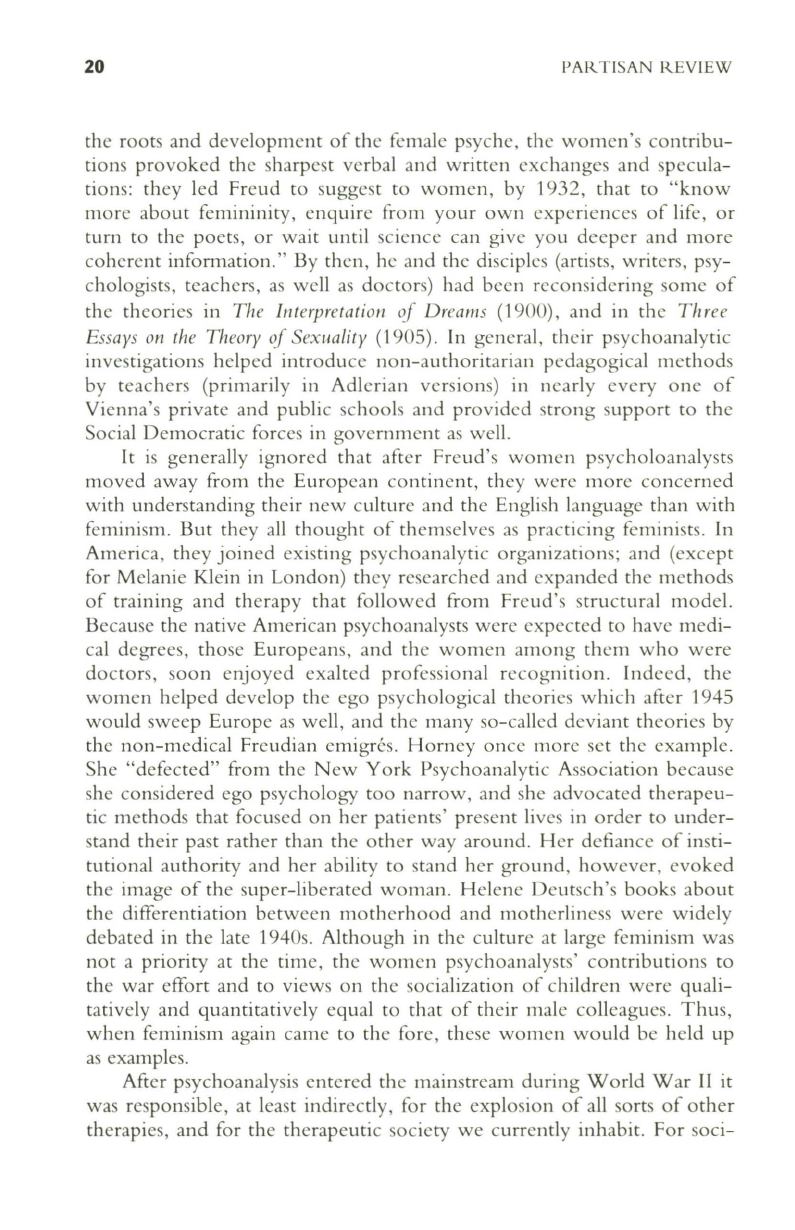
20
PARTISAN REVIEW
the roots and development of the female psyche, the women's contribu–
tions provoked the sharpest verbal and written exchanges and specula–
tions: they led Freud to suggest to women, by 1932, that to "know
more about femininity, enquire from your own experiences of life, or
turn to the poets, or wait until science can give you deeper and more
coherent information." By then, he and the disciples (artists, writers, psy–
chologists, teachers, as well as doctors) had been reconsidering some of
the theories in
The Interpretatioll of Dreams
(1900), and in the
Three
Essays on the Theory of Sexuality
(1905). In general, their psychoanalytic
investigations helped introduce non-authoritarian pedagogical methods
by teachers (primarily in Adlerian versions) in nearly everyone of
Vienna's private and public schools and provided strong support to the
Social Democratic forces in government as well.
It is generally ignored that after Freud's women psycholoanalysts
moved away from the European continent, they were more concerned
with understanding their new culture and the English language than with
feminism. But they all thought of themselves as practicing feminists. [n
America, they joined existing psychoanalytic organizations; and (except
for Melanie Klein in London) they researched and expanded the methods
of training and therapy that followed from Freud's structural model.
Because the native American psychoanalysts were expected to have medi–
cal degrees, those Europeans, and the women among them who were
doctors, soon enjoyed exalted professional recognition. Indeed, the
women helped develop the ego psychological theories which after 1945
would sweep Europe as well, and the many so-called deviant theories by
the non-medical Freudian emigres. Horney once more set the example.
She "defected" from the New York Psychoanalytic Association because
she considered ego psychology too narrow, and she advocated therapeu–
tic methods that focused on her patients' present lives in order to under–
stand their past rather than the other way around. Her defiance of insti–
tutional authority and her ability to stand her ground, however, evoked
the image of the super-liberated woman. Helene Deutsch's books about
the differentiation between motherhood and motherliness were widely
debated in the late 1940s. Although in the culture at large feminism was
not a priority at the time, the women psychoanalysts' contributions to
the war effort and to views on the socialization of children were quali–
tatively and quantitatively equal to that of their male colleagues. Thus,
when feminism again came to the fore, these women would be held up
as examples.
After psychoanalysis entered the mainstream during World War II it
was responsible, at least indirectly, for the explosion of all sorts of other
therapies, and for the therapeutic society we currently inhabit. For soci-


